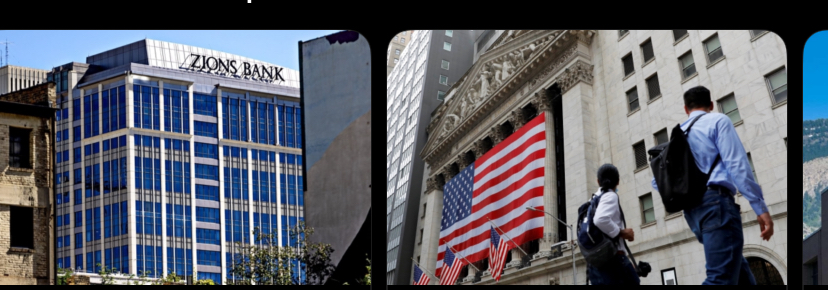Is this a red flag or a relief? Why Zions Bancorporation’s Q3 profit beat — despite a $50 million fraud hit — could still raise eyebrows

In a quarter that combined reassurance with caution, Zions Bancorporation managed to deliver better-than-expected earnings while simultaneously disclosing a meaningful credit loss tied to alleged fraud. The dual story may leave investors both relieved that the group performed and alert that all risks may not yet be fully visible.
Zions reported net income of $222 million for the third quarter, narrowly surpassing expectations. At the same time, the banking group revealed it had incurred a charge-off of approximately $50 million stemming from loans made through its wholly-owned subsidiary California Bank & Trust in San Diego. The exposure emerged amid alleged misconduct by a California commercial real estate investor group.
According to the bank’s disclosures, the troubled portfolio consisted of roughly $60 million in commercial-real-estate (CRE) loans extended by California Bank & Trust to investment funds tied to LA-area real-estate investors. The bank is now engaged in litigation, accusing the borrower group of blocking the lender’s foreclosure priority rights on the property collateral.
CEO Harris Simmons addressed the issue during the earnings call, describing the charge-offs as an “isolated” event and asserting that Zions currently has no further exposure to the specific borrowers in question. He added that the bank has engaged an external third-party review of its loan portfolio to detect any similarly hidden risks.
While the profit beat offers a degree of comfort, the losses and related disclosure prompt sober questions about credit-quality oversight. The bank’s loan-loss allowances declined to $725 million, falling short of analyst estimates of about $737 million. To absorb the hit from the alleged fraud, Zions more than tripled its provision for credit losses compared with the prior year — provisioning $49 million compared with roughly $13 million a year ago.
On the upside, Zions’s core lending performance held up better than many might have feared. Net interest income rose to $672 million, edging ahead of analyst forecasts. This growth in the core business bolsters the argument that the underlying operations remain healthy.
From a market perspective, the results and disclosures generated a mixed reaction. Though the profit beat helped, the revelation of the $50 million plus exposure caused renewed jitters in the regional-banking sector, as investors remain leery of hidden credit losses. Some analysts argue the stock reaction has been too negative given the isolated nature of the case; others contend that this episode may signal deeper credit-stress risks in sectors such as CRE and leveraged commercial real-estate.
For Zions, whose total assets stood near $89 billion at quarter end, the stakes are meaningful — but perhaps manageable, if the issue truly is contained. The key will be monitoring whether further hidden losses emerge and whether the external loan-portfolio review surfaces additional problems.
Going forward, investors will watch several metrics closely: whether further credit-quality surprises are buried, the adequacy of reserves and provisions, and how the bank’s core lending business evolves amidst rising rates and economic uncertainty. While this quarter’s result offers some relief, it also underscores that regional banks remain under scrutiny in today’s high-risk environment.
FAQ:
Q1: What exactly triggered the $50 million loss at Zions?
A1: The loss stems from two commercial-real-estate loans made by California Bank & Trust to a group of investment funds tied to real-estate investors in Southern California. The bank alleges that the borrowers blocked its rights to foreclosure priority on the properties used as collateral and misrepresented aspects of the deal.
Q2: Does this mean Zions has broader credit-quality problems?
A2: The bank asserts the issue is isolated — CEO Harris Simmons said there’s no further exposure to the specific borrowers involved. However, because the event was not caught earlier and because it occurred in a sensitive CRE segment, many investors remain cautious about broader credit risks.
Q3: Should shareholders worry that the reserves are too low?
A3: Zions’s allowances for loan losses fell to $725 million — below some analyst estimates — while the bank increased its provision for credit losses significantly. It will be critical to observe whether further losses require additional reserve increases, and if so, whether the current reserves prove sufficient.
Q4: Did the bank’s earning beat portray underlying strength despite the loss?
A4: Yes — net interest income rose to $672 million, beating forecasts, which suggests the bank’s core lending business remains relatively robust. The loss appears not to have derailed the performance entirely.
Q5: What should investors watch in the next quarter or two?
A5: Key indicators include: (i) any further credit-loss disclosures, especially in CRE or commercial portfolios; (ii) movements in provisions and allowances; (iii) the bank’s commentary on portfolio reviews and whether any additional problem credits surface; (iv) trends in core earnings, specifically net interest margin and loan growth; and (v) broader sector trends in regional banks, given the heightened sensitivity among investors to credit events.

